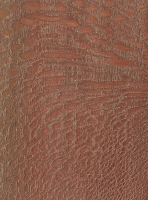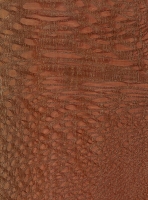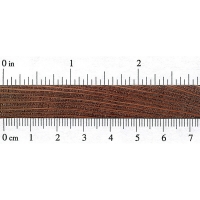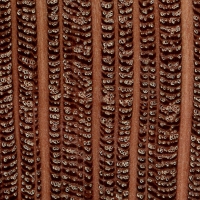|
 |
Common Name(s): Macadamia Nut, Macadamia Scientific Name: Macadamia spp. (M. integrifolia) Distribution: Native to eastern Australia (also cultivated in Hawaii and other tropical areas) Tree Size: 20-40 ft (6-12 m) tall, 1-1.5 ft (.3-.5 m) trunk diameter Average Dried Weight: 44 lbs/ft3 (705 kg/m3) Specific Gravity (Basic, 12% MC): .57, .70 Janka Hardness: 2,300 lbf (10,230 N) Modulus of Rupture: No data available Elastic Modulus: No data available Crushing Strength: No data available Shrinkage: No data available |
Color/Appearance: Heartwood color ranges from a pale pink to darker reddish brown. Very large rays exhibit a lacewood-like effect when quartersawn. Color tends to darken with age.
Grain/Texture: Has a fairly coarse texture.
Endgrain: Diffuse-porous; medium pores in tangential rows; solitary and tangential multiples of 2-3; deposits in heartwood occasionally present; growth rings indistinct; very wide rays easily visible without lens; parenchyma banded, diffuse-in-aggregates.
Rot Resistance: No data available.
Workability: Can be difficult to work with machine tools, causing tearout during planing. Difficult to dry, with turned pieces developing numerous checks unless dry wood is used. Glues, turns, and finishes well.
Odor: No characteristic odor.
Allergies/Toxicity: Although there have been no adverse health effects reported for Macadamia Nut, several other genera in the Proteaceae family have been reported to cause eye and skin irritation. See the articles Wood Allergies and Toxicity and Wood Dust Safety for more information.
Pricing/Availability: Like most other nut woods, Macadamia Nut trees are prized much more for their production of nuts than for their lumber. Supplies are likely to be limited, with prices high for an imported wood.
Sustainability: This wood species is not listed in the CITES Appendices or on the IUCN Red List of Threatened Species.
Common Uses: Knife scales, decorative boxes, bowls, and other small specialty wood objects.
Comments: Both literally and figuratively, this hardwood perhaps lives under the shadow of its nut-bearing branches, with Macadamia being a name associated with food, and not lumber. However, the lacewood-like timber that the tree yields is highly decorative, and perfectly suited for smaller specialty projects. Macadamia Nut is in the Proteaceae family, making it a true lacewood relative, which also includes Silky Oak and Leopardwood.
Proteaceae family:
- Lacewood (Panopsis spp.)
- Leopardwood (Roupala spp.)
- Silky Oak, Northern (Cardwellia sublimis)
- Silky Oak, Southern (Grevillea robusta)
None available.
 |
 |
 |
 |





About the durability: We cut down a large macadamia tree in our backyard 25 years ago, and when I tried to rip it out for a new garden shed, the dead stump had little to no rot in it.
I brought some pieces home from Hawaii many years ago. I turned a small bowl right away, and it literally turned like butter. I had been warned that it cracks easily. I ;put the bowl in a plastic bag overnight, and the net day shook out the accumulated water and repeated this process until no more condensate formed, and then set it aside. This procedure had worked with sopping wet butternut with not problems. I checked the bowl daily for a number of weeks, until one day it had popped an enormous crack, about 1/2″ wide at the rim of… Read more »